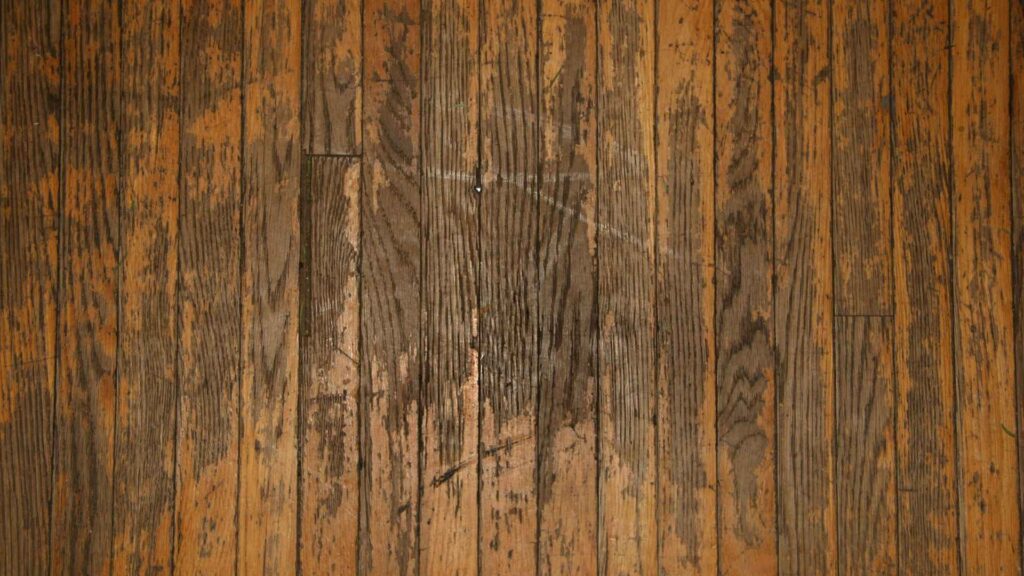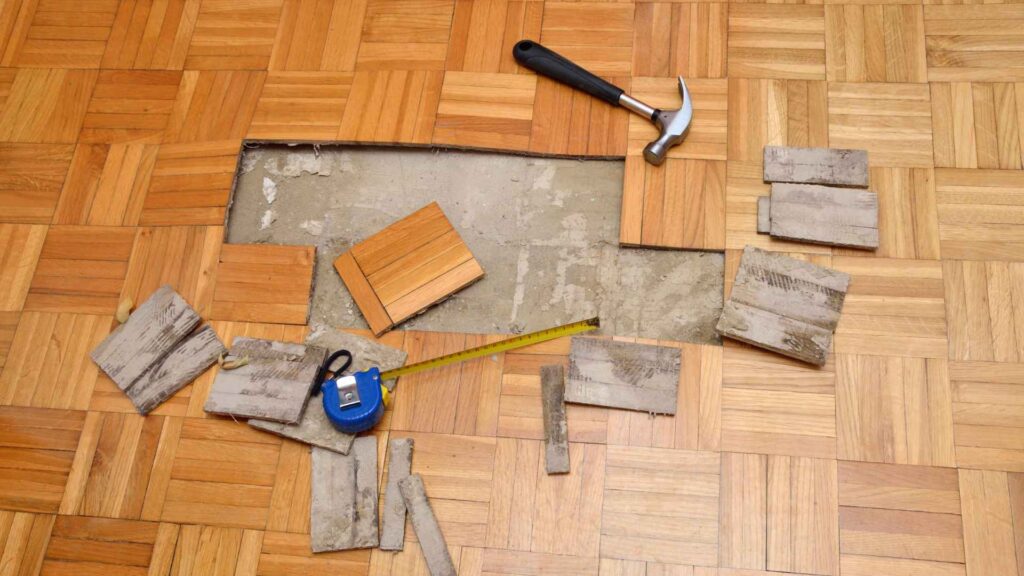Table Of Content
ToggleAs a pest control expert, I’ve seen firsthand the devastation that termites in hardwood floors can cause. These destructive insects can silently munch away at the very foundation of your home, leaving behind a costly mess.
But fear not, this guide will equip you with the knowledge to identify, combat, and prevent these unwelcome visitors.
Termites are social insects that live in large colonies with specific roles. Subterranean termites, the most common culprits in hardwood floor damage, live underground and build mud tubes to access moisture and food sources – including your beautiful hardwood. While they prefer softer woods, termites won’t hesitate to feast on hardwood floors, especially if they’re damp or damaged.
There are several telltale signs that termites have taken up residence in your hardwood floors:

Understanding the types of damage termites can cause to hardwood floors helps homeowners assess the severity of an infestation. Common types of termite damage include:
Here’s a step-by-step guide to inspecting your hardwood floors for termite activity:
Contact us for immediate termite inspection and solutions.

If you suspect termites have taken up residence in your beautiful hardwood floors, don’t panic! Here’s a breakdown of how pest control experts tackle these destructive insects, combining targeted treatments with preventative measures to ensure long-term protection:
Schedule a termite assessment with our experts today.
Alongside eradication efforts, professional pest control companies implement preventative measures to safeguard your home from future termite invasions:
By combining these treatment and control methods, pest control experts can effectively eliminate termites from your hardwood floors and prevent them from returning. You can always use plants to repel termites.

While DIY termite control products exist, they often prove ineffective for large-scale infestations. Professional pest control companies have access to specialized treatments and expertise to ensure complete termite eradication.
Protecting Hardwood Floors from Future Infestations
Here are some ongoing maintenance tips:
Reach out for experienced termite management.
After treating termites in hardwood floors, ongoing monitoring and maintenance are essential to prevent reinfestation:

As a pest control expert, I understand the stress and worry that termite infestations can cause. By following the tips in this guide, you can effectively identify, treat, and prevent these destructive insects from wreaking havoc on your beautiful hardwood floors. Remember, early detection is key.
If you suspect termites, don’t hesitate to contact a qualified pest control professional to protect your home and investment.
To effectively treat termites in a hardwood floor, it’s crucial to first identify the extent of the infestation. Professional pest control services typically use a combination of liquid termiticides, termite baits, and ongoing monitoring to eliminate termites and prevent future damage.
Signs of termite infestation in hardwood floors include hollow-sounding wood, blistering or sagging floorboards, mud tubes along walls or joints, and discarded termite wings near windowsills or light fixtures. Regular inspections by pest experts can confirm infestations and guide treatment plans.
Termites can indeed consume oak floors, as they are attracted to cellulose-rich materials like hardwood. Oak, being a dense and sturdy wood, can still be susceptible to termite damage if not protected or treated promptly.
Treating termites in interior wood involves targeted applications of termiticides or foams directly into termite galleries or infested areas. Additionally, using termite bait stations around the property can intercept termites before they reach interior wood structures, providing comprehensive protection. Regular inspections and maintenance are essential for long-term termite control.
Your trusted pest control experts in Southern California. Keeping your neighborhood pest-free!